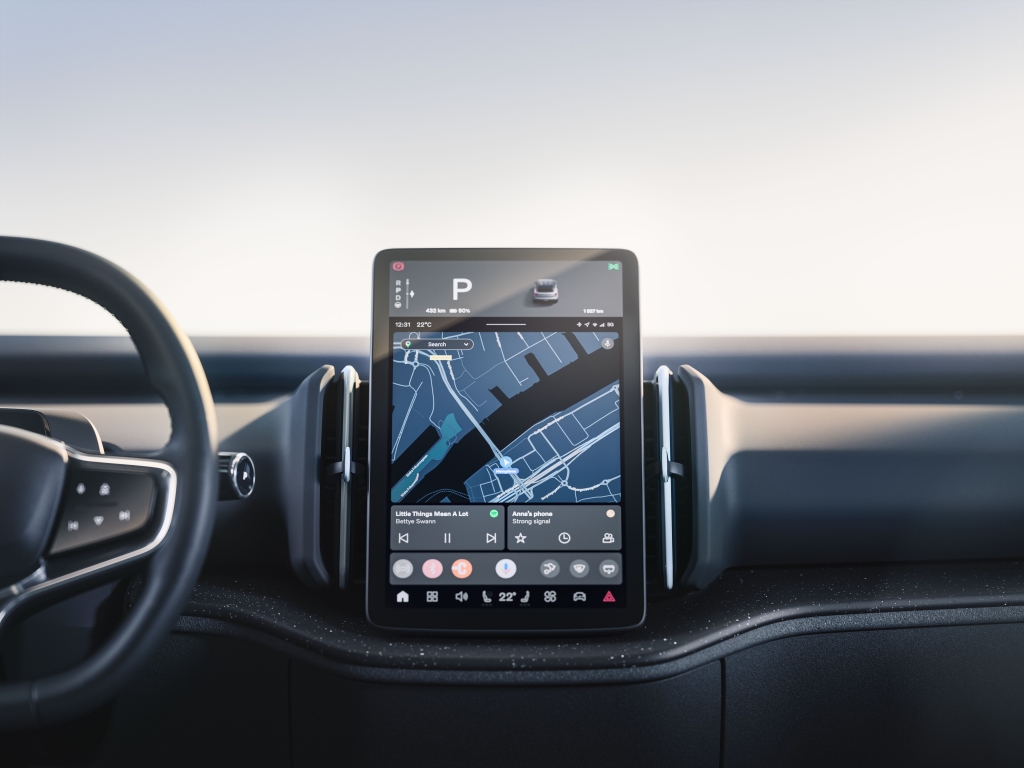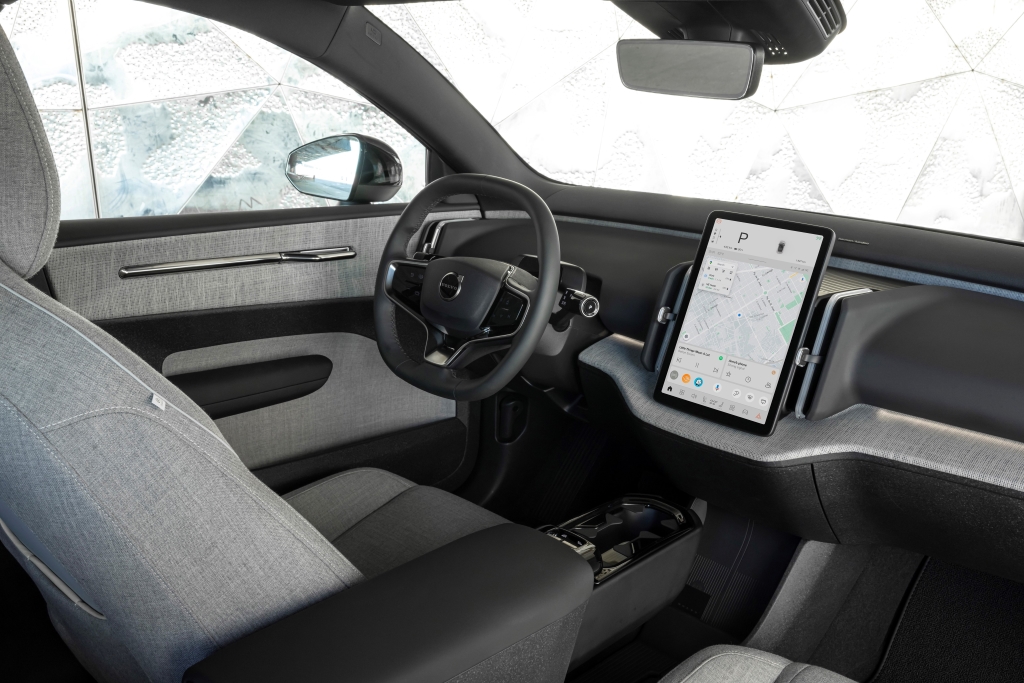With its storming performance and attractive pricetag, the Volvo EX30 may just be the most appealing EV currently on the market. But, while it is comically quick and fantastic fun to drive, its owner need to be prepared for some compromises in other areas.
We like:
Really impressive power delivery
Excellent driving dynamics
Comfortable ride quality
Decent driving range
Lots of storage space in the minimalist cabin
Attractive styling
One-pedal driving is superbly calibrated
We don’t like
Lengthy charging times from a home power outlet
Inadequate fast-charging infrastructure
No instrument cluster and confusing ergnonomics
Too reliant on the touchscreen interface for basic operations
Forgetful driver assistance systems
Tight passenger space and restricted cargo volume
We have published many previews of the new Volvo EX30 in the run-up to its local release, and often surmised that its (at that stage, claimed) acceleration figures might turn this electric crossover into a genuine performance-car bargain. Consequently, when the opportunity arrived to welcome a twin-motor example for review, it was eagerly accepted.
The background for this review is our recent experience with the single-motor RWD Volvo XC40, which was capable in all ways and surprising fun to drive. Its only drawbacks related to the usual charging infrastructure concerns, and its pricetag, which placed it far above the much quicker and more modern twin-motor EX30s.
Our concerns were unnecessary, as it turns out, because these two Volvo models don’t actually compete with each other. The EX30 and XC40 Recharge are very different cars in concept and will appeal to very different drivers, and their sizeable performance difference is not as relevant as one might think. Rather imagine the EX30 as an eccentric enthusiast’s machine, and the right picture may start forming in your mind…
Appearance
Finished in sparkling pearlescent Crystal White with blacked-out detailing and roof pillars, the test car cut a futuristic dash in the metal and plastic. This effect is further heightened by distinctive LED light signatures, with the front units displaying a “Thor’s hammer” motif and the split-level tail light clusters giving a nod to Volvo SUVs from years gone by.
The exterior details are classy as well, with a small illuminated Volvo logo on the side of each rear light unit and very discreet EX30 logos where the rear roof pillars meet the roof. And, thanks to the electric underpinnings, the EX30 has a four-square stance on the road.
The 20-inch wheels display a neat combination of aerodynamic purpose and style, and are pushed to the corners of the body, where they combine with pronounced wheel arch flares to create a surprisingly muscular stance for a vehicle this compact. Whatever the scenario, this SUV-crossover stands out in all surroundings, and elicits positive comments from every onlooker.
Related: Visit Volvo’s own website to configure the EX30 of your dreams.
Scorching performance
That 69 kWh battery pack located under the floor contributes significantly to the twin-motor EX30’s considerable kerb weight of 1 960 kg, but the 315 kW and 543 Nm its two motors send to all four wheels certainly makes it feel a lot lighter than it actually is. It’s downright blistering from a standstill, and there’s little doubt that the claimed 0 - 100 km/h sprint time of 3.6 seconds should be attainable in ideal conditions.
The EX30 doesn’t only compress its occupants into its seats out of the blocks, though - that rush of immediate and relentless acceleration is on tap anywhere up to its governed 180 km/h top end. And all of that in absolute silence. The power delivery, including the one-pedal driving function, is also smooth and very well-controlled, making the tremendous speed on tap easy to access - perhaps too easily for the safety of your driver’s licence…
Volvo EX30 driving range and charging
Volvo reckons that the twin-motor EX30 should be able to go up to 450 km on a single charge. During this test period, a 135-km freeway trip to Johannesburg and back to Pretoria required an indicated 40% of the battery’s power, indicating a real-world range between 330 km and 350 km on a full charge in similar usage conditions. Resisting the urge to bury the right pedal in the carpet, or predominantly low-speed urban use, could see this rise to a realistic 400 km, which is decent for this size of EV battery.
However, as we found during the XC40 review, public charging infrastructure still leaves something to be desired. The level-2 AC charging point at Castle Gate shopping centre only managed to add 20% of battery range after 120 minutes, and true high-speed DC chargers are still few and far between.
At-home charging isn’t fantastic, either. Plugged into a standard 220V wall socket will require up to 30 hours to get from 30% to full, and getting to 60% occupied the garage wall plug for more than 12 hours. The key is to never let the battery run down far enough to necessitate such a protracted charging period…
Excellent driving dynamics
Placing the heavy batteries so low down in a car has the fortunate side-effect of getting the car’s centre of mass very close to the ground. This has inherent benefits for body control and predictable handling, while the massive weight literally presses the tyres into the tarmac to eke out extra grip.
All EVs with a “skateboard” type platform design of this type reap these benefits, but the Volvo EX30 adds a level of polish to this inherent goodness which is tremendously rewarding to an enthusiastic driver. The springs and dampers strike a near-perfect balance between comfort and control, being compliant enough to deal with suburban potholes yet keeping a firm hand on body motions during fast corners.
The steering is equally well-judged in both ratio and assistance. While the steering system itself is not awash with road feel, the small Volvo is eager to change direction; yet it remains stable and predictable as cornering speed mounts. Seen in the context of modern performance cars, the EX30 has chassis dynamics right up there with the best hot hatches, but seen in the context of urban-focused compact SUVs, it is a revelation.
Volvo EX30 interior
Calling the Volvo EX30’s interior minimalistic is an understatement. At first glance, it looks bare and brutalist, with only a large tablet-oriented touchscreen to break the relentless horisontal design emphasis. Yes, the low-cut dashboard and absence of ornamentation does lend the cabin a spacious and airy feel,enhanced by the standard (non-opening) glass roof, but the overall effect is clinical and devoid of anything interesting to look at.
At least the materials are mostly classy and upmarket, although some of the harder plastics around the centre armrest were already showing scuff marks. The colouring is also pretty, with a blue colour scheme applied to the cloth-upholstered seats and recycled denim used for further decor. And, being a Volvo, the seats are brilliant: Superbly comfortable and with a wide array of adjustments accessible through a single controller knob on the seat base.
Massive cabin storage
The Volvo EX30’s minimalistic interior design pays huge dividends in terms of storage space, because it’s almost impossible to imagine any other vehicle out there with so much in-cabin room for travel chattel. There’s a storage tray running the entire length of the centre console/armrest assembly, with the rear section removable and the front two-thirds offering a false floor area.
Still in the armrest area, there’s a two-position slide-out tray which can be used as either another storage cubicle, or, by sliding a divider into position, to hold either one or two cups. The glove box itself is usefully-sized and located underneath the middle of the dashboard, but is quite tricky to access - we’ll talk more about that shortly.
Finally, the door bins are cavernous. There are no window switches in the doors, and neither are there seat- or mirror controls or speaker enclosures, and this all makes for a door’s interior surface which is almost entirely devoted to storage space. The armrest is only that - an armrest, and matches the unit perched atop the centre console with its “floating” appearance.
Unusual ergonomics
Mounted ahead of the centre armrest are two physical toggle switches surrounded by a touchpad. On this pad, the door lock/unlock controls can be found, along with the rear window lockout control and the selector which instructs either the front- or rear glass to respond to the respective window switches.
This window control arrangement takes some getting used-to, but can be overcome with familiarity and practice. The more annoying bit is how easy it is to inadvertently lock or unlock the doors - all it takes is one unintentional brush of an arm reaching towards the touchscreen to make the door locks go click. We’ll get to the other ergonomic issues when we tackle that touchscreen a few paragraphs down.
Volvo EX30 interior space and practicality
Being an SUV-crossover, one might expect the EX30 would offer as much cabin space for people as it does for carry-on luggage, but this doesn’t necessarily prove to be the case. There’s enough cabin width to accommodate three average-sized adults on the rear bench, but their knee room will be restricted.
Front-seat leg- and shoulder room are more than adequate, and it is quick and easy to find a comfortable driving position, thanks to the wide range of seat adjustments and a steering wheel which adjusts for both rake and reach.
But, while there’s plenty of head room all round, the bulky battery packs under the floor gives the EX30 a rather shallow foot well. This creates a seating position which feels very low in the car, offers little under-thigh support in the rear seat, and effectively eliminates the imperious driving position you’d expect from an SUV. It also restricts foot space for the rear passengers, even with slimline-design front seat bases.
The luggage compartment measures 312 litres with the rear seats in use, which is handy enough but not quite generous. There is a useful hidden compartment under the trunk floor, however, and this can easily play host to a laptop and camera bag with space to spare.
Check out these clever details in the Volvo EX30.
Volvo EX30 touchscreen operation
Most of the Volvo EX30’s functionality has to be accessed through the central touchscreen, and, because there is no instrument display in front of the driver, the same touchscreen has to serve as driver info display as well. To its credit, the touchscreen has very good display quality, and is reasonably legible even in bright sunlight.
Consolidating most vehicle functions in one user interface makes sense from a button-count and wiring perspective, because doing so reduces manufacturing cost and complexity. Simplicity is its own virtue, and using a virtual switch panel could be easy enough to get used to after a while. Except that Volvo’s execution of this philosophy misses the mark by quite some margin.
 Upon start-up, the screen defaults to an always-on driver info section at the top, with infotainment and communication taking up most of the lower third of the screen and the largest bit in the middle devoted to Google and navigation. Right at the bottom of the screen are two rows of tiny virtual buttons with little icons and even littler fonts to describe their functions.
Upon start-up, the screen defaults to an always-on driver info section at the top, with infotainment and communication taking up most of the lower third of the screen and the largest bit in the middle devoted to Google and navigation. Right at the bottom of the screen are two rows of tiny virtual buttons with little icons and even littler fonts to describe their functions.
The top one of these rows is adaptive, and its options change depending on the car’s operating state. These options include a selector for Bluetooth audio, a shortcut to display the camera feed, the tailgate opener, and the glove box release. The latter takes a surprising amount of focus to accurately activate, making for some occasional frustration when reaching for something in the voluminous cubby hole.
The bottom row, viewed from left to right, consists of the hazard warning, an app menu icon, the left heated seat control, temperature settings for the two climate control zones, the right heated seat control, fan speed control, car functions, and a Home button.
How well does the touchscreen work?
Let’s say that you’re feeling a bit frosty and want to turn up the heat. First, you need to select your zone’s temperature adjustment icon on screen, and that means looking away from the road to find the right virtual button. After that, a temperature slider appears on screen, so you need to look down again and aim carefully to hit the right spot on the screen. And then, once you’ve almost got the temperature set correctly, the car beeps at you to watch the road and the temperature display probably disappears… A simple physical switch would have avoided all that.
This unneccessary schlepp applies to most functions related to operating the Volvo EX30, apart from its wonderful dynamics and splendid performance. Want to set the side mirrors? Press the “Car” icon, look for the mirror icon (figuring out what the iconograms on screen mean along the way), select the mirror you want to adjust, poke at the right touchpad on the steering wheel. While the car beeps at you for not paying attention to the road.
The frequent beeping can be turned off, mind you. It involves selecting and scrolling through many on-screen menu layers to look for the “driver monitor” setting, where you just tap an icon to switch it off. The same applies to the speed limit warning, although that at least has a shortcut icon on the “Car” shortcut menu. But, the next time you get in and drive away, both these annoyances will have defaulted to on again, so it becomes time to go through the menus again…
To be fair, after a few days of use, most settings will have been sorted out, with preferred temperatures, mirror adjustments and audio settings dialled-in to the driver’s profile, and one eventually reaches the point of seriously questioning whether making another minor adjustment is really worth the hassle.

Safety and driver assistance
As is customary in Volvos, the EX30 has sterling safety credentials. Standard safety kit across the range includes 7 airbags, of which the final one is mounted on the inner edge of the driver’s seat, along with stability- and traction control. Neither Euro NCAP nor the NHTSA in the USA has hurled an EX30 at crash test barriers yet, but the Zeekr X (which is very closely related to the EX30 and shares its platform) received a 5-star rating in 2024.
The driver assistants generally work well, and perform up to Volvo’s usual high standards. Items such as the lane-keeping assistance and following distance indicators are helpful but not intrusive, and the intervention thresholds of the various safety gadgets can be adjusted in the appropriate sub-sub-menu on (you guessed it) the centre screen.
Verdict
Despite its apparently barren interior design, the Volvo EX30 rides and drives like a proper luxury machine. It is comfortable on almost any road, has a hushed cabin with wonderful seats, and the Harman Kardon premium sound system in this Ultra specification properly thumps music at the occupants.
Conversely, the level of performance on offer borders on the absurd, and its driving dynamics will delight anyone who wants a car to be more than just a device to get from A to B. Add very attractive styling and a comprehensive equipment list to this variety of virtues, and it becomes easy to fall for the small Volvo EV’s charms.
Still, the overt reliance on touchscreen functionality counts as a large enough quirk for many buyers to reject the car outright, simply because it takes too much acclimatising. As with classic Alfa Romeos, some customers will ignore the quirks and irritations and call it “character” just because the car is so good to drive, while others will flatly refuse the user interface, regardless of how brilliant the rest of the car is.
Martin Pretorius
- Proudly CHANGECARS
Find the perfect new or used Volvo for your needs in this solid selection on CHANGECARS!











